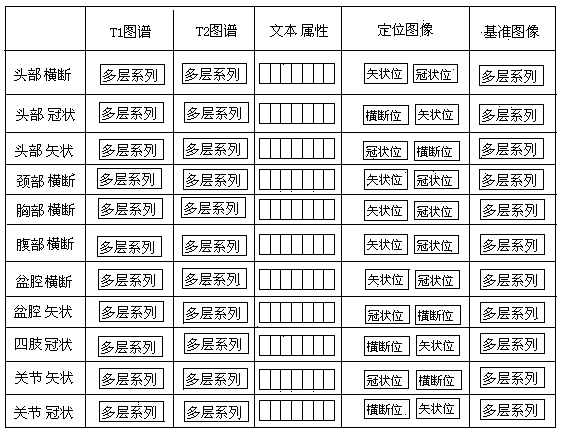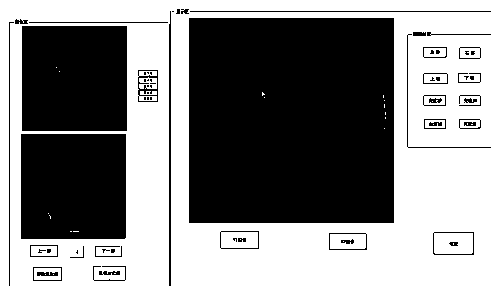Structure and method for automatic recognition of magnetic resonance spectrum
An automatic identification and magnetic resonance technology, applied in the fields of medical images, informatics, instruments, etc., can solve the problems that affect the learning and mastery of magnetic resonance atlas, the positioning images cannot be displayed in the same frame, and it is inconvenient to carry, so as to be beneficial to mastery and learning. , increased enthusiasm and interest, clearly structured effect
- Summary
- Abstract
- Description
- Claims
- Application Information
AI Technical Summary
Problems solved by technology
Method used
Image
Examples
Embodiment Construction
[0035] The technical solutions of the present invention will be described in detail below in conjunction with the accompanying drawings and examples.
[0036] The following are specific implementation methods.
[0037] 1. According to figure 1 Build model data.
[0038] 2. Establish T1 map, including head cross-section, head coronal, head sagittal, neck cross-section, chest cross-section, abdomen cross-section, pelvic cross-section, pelvic sagittal, limbs coronal, Joint sagittal, joint coronal. Adjust the brightness and grayscale of each part and each level of the image, and adjust the center position of the image.
[0039] 3. Establish T2 atlas, including head cross-section, head coronal, head sagittal, neck cross-section, chest cross-section, abdomen cross-section, pelvic cross-section, pelvic sagittal, limbs coronal, Joint sagittal, joint coronal. Adjust the brightness and grayscale of each part and each level of the image, and adjust the center position of the image. ...
PUM
 Login to View More
Login to View More Abstract
Description
Claims
Application Information
 Login to View More
Login to View More - R&D Engineer
- R&D Manager
- IP Professional
- Industry Leading Data Capabilities
- Powerful AI technology
- Patent DNA Extraction
Browse by: Latest US Patents, China's latest patents, Technical Efficacy Thesaurus, Application Domain, Technology Topic, Popular Technical Reports.
© 2024 PatSnap. All rights reserved.Legal|Privacy policy|Modern Slavery Act Transparency Statement|Sitemap|About US| Contact US: help@patsnap.com










